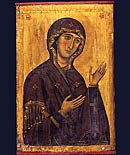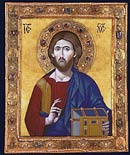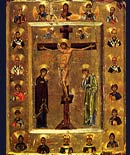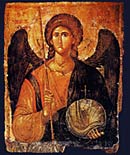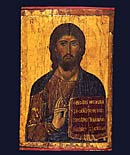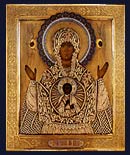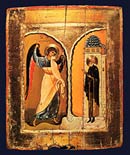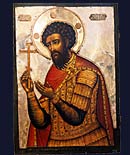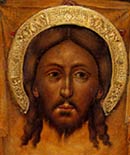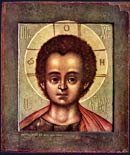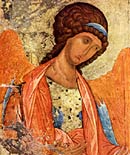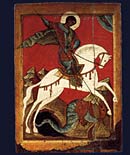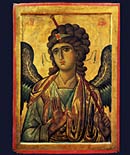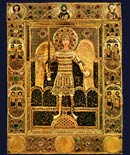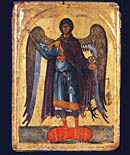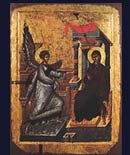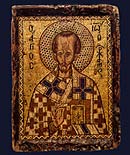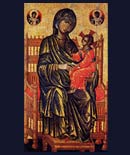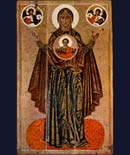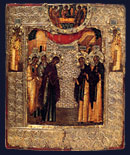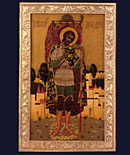Ikon History - Our Lady of Kazan
Over the years a number of variants of ikons of Mary and Christ were created. The most popular new version in Russia was Our Lady of Kazan, which was called "Kazanskaya" there. The ikon was found in a garden in 1579 in the city of Kazan and therefore, all copies of the ikon must be painted from that date forward. The original ikon was carried by Prince Pozharsky into battle against the Poles and it began to take on a militantly nationalistic reputation.
A special church dedicated to the ikon was built in Kazan in 1679, but the ikon had been kept in Moscow since the victory over the Poles and a copy was installed in the new cathedral of Kazan. In 1821 the original icon of Our Lady of Kazan moved again, this time to St. Petersburg where it was installed in the new Kazan Cathedral on Nevskii prospect in the heart of the city. By this time the ikon had become extremely popular and there were nine separate miracle working copies of the ikon around the country.
By the middle of the 19th century the original ikon was encrusted in diamonds, massive emeralds and a gold cover. In 1918 the ikon was seized by the new Soviet Government and transported to Moscow. It vanished enroute, only to turn up in New York City, where it is in the possession of the Russian Orthodox Church Abroad.
The two examples opposite are 150 years apart. Although the drawing is similar, there are many differences between the two ikons, which shows the freedom that Russian artists felt in dealing with traditional ikon designs. There are slight changes in the folds of the garments, but the most striking difference is the coloration. In the lower ikon the artist has chosen a much warmer palate, including bright cinnabar for Christ's robe. The painter has also used thin bright gold highlights over the surfaces of the clothes of Mary and Christ which makes it very decorative, but perhaps less spiritual. The modeling of the faces, particularly of the Virgin is much harder and less subtle in the later painting.
Ikons of Our Lady of Kazan are quite numerous and often found in sales of Russian art today.
Next chapter: Middle Byzantine Period
